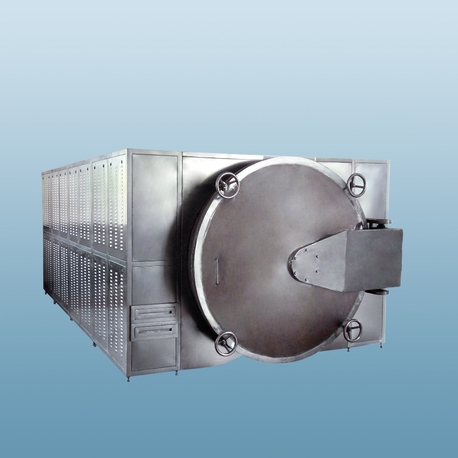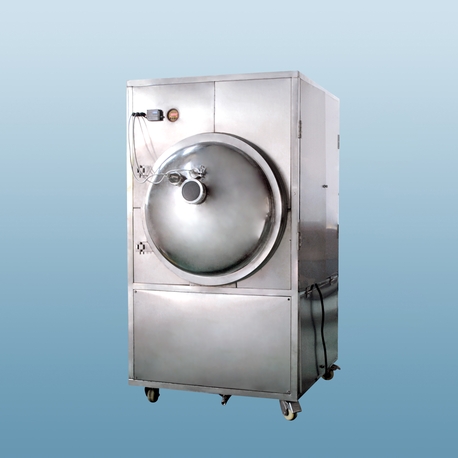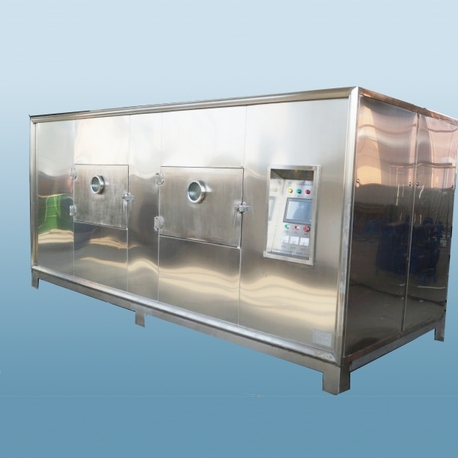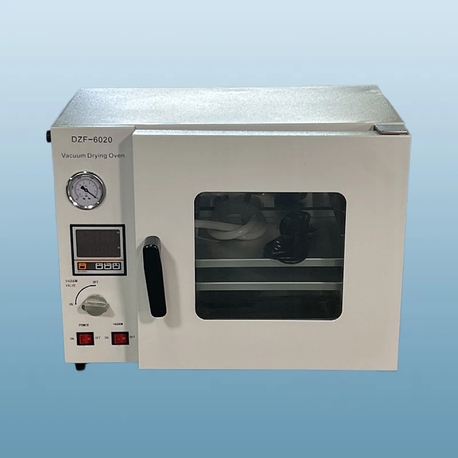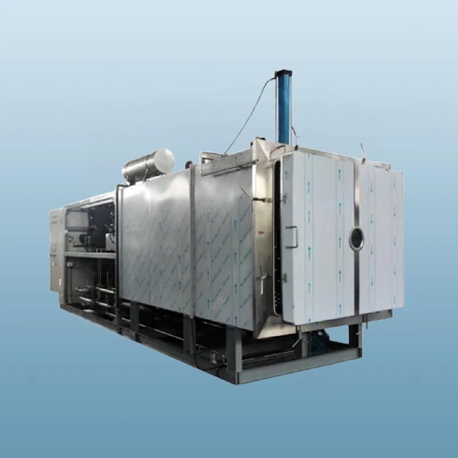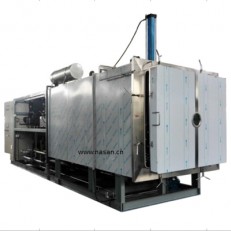When people hear the term "commercial microwave," they often think of the large, sturdy units found in restaurant kitchens, used to quickly reheat food. However, the world of commercial microwave technology extends far beyond the familiar oven. It encompasses a sophisticated range of industrial equipment designed for drying, heating, and processing materials on a large scale. For business owners and plant managers in sectors like food processing, pharmaceuticals, and chemicals, understanding the different types of equipment—from the Industrial Microwave Dryer to the specialized Microwave Vacuum Dryer—is crucial for improving efficiency and product quality. This article will explore the expansive ecosystem of Microwave Drying Equipment, clarify the role of the standard commercial microwave oven, and guide you on how to select a reliable commercial microwave supplier, all while addressing common challenges and questions.
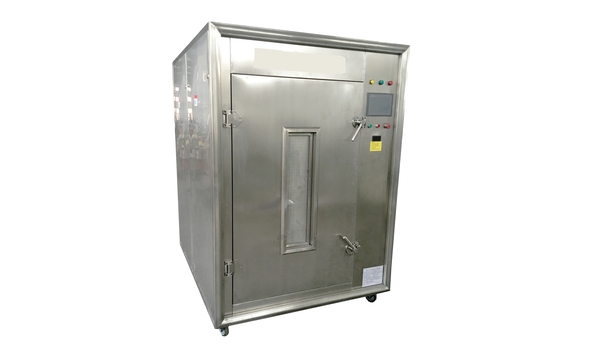
What Defines a Modern Commercial Microwave?
At its core, a commercial microwave is a device that uses microwave radiation to heat and cook food or process materials in a commercial setting. Unlike domestic models, they are built for durability, higher power output, and continuous use. The key component of any commercial microwave system is the magnetron, which generates the microwaves. These microwaves then cause water molecules within the product to vibrate, generating heat from the inside out. This fundamental principle is what makes microwave technology so efficient. While a commercial microwave oven for a cafeteria is designed for speed and convenience in food service, industrial applications leverage this same principle for much more complex tasks like drying, curing, and sterilizing.
Beyond the Kitchen: Industrial Microwave Dryer Systems
An Industrial Microwave Dryer represents a significant leap in scale and application from a standard countertop unit. These are not merely larger microwaves; they are integrated systems engineered for conveyorized or batch processing of materials.
How They Work
Industrial dryers tunnel-like chambers where products are conveyed on a belt. Multiple magnetrons are strategically placed to ensure even exposure to microwave energy. The system is often combined with airflow to remove the moist air, resulting in rapid and uniform drying.
Key Applications
Food Processing: Drying fruits, vegetables, herbs, and pasta. It preserves color, nutrients, and flavor far better than traditional hot-air drying.
Pharmaceuticals: Drying medicinal powders and granules without degrading heat-sensitive active ingredients.
Textiles: Rapid drying of dyed fabrics and yarns.
Chemicals: Drying catalysts and various chemical powders.
The primary advantage is speed. An Industrial Microwave Dryer can reduce drying times from hours to minutes, leading to increased production throughput and lower energy costs.
The Precision of Microwave Vacuum Dryer Technology
For products that are extremely heat-sensitive, a Microwave Vacuum Dryer is the ideal solution. This technology combines the internal heating of microwaves with the reduced-temperature drying environment of a vacuum chamber.
How They Work
The unit places the product in a sealed chamber where a vacuum pump drastically reduces the air pressure. This lowering of pressure lowers the boiling point of water, meaning moisture can evaporate at much lower temperatures (e.g., 30-40°C instead of 100°C). Microwaves provide the energy for evaporation without overheating the product.
Key Applications
High-Value Foods: Drying berries, mushrooms, and spices where preserving delicate aromas, vitamins, and textures is paramount.
Biotech and Pharmaceuticals: Processing sensitive biological materials, enzymes, and probiotics that would be destroyed by high heat.
Advanced Ceramics: Drying pre-formed ceramic parts without causing cracks or structural defects.
The Microwave Vacuum Dryer offers unparalleled quality control for delicate products, preventing thermal degradation and oxidation.
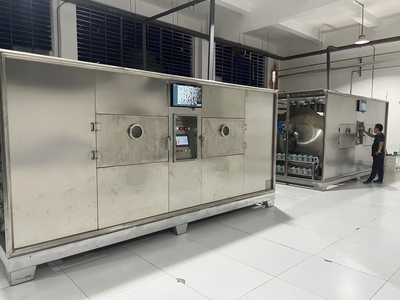
The Broad Category of Microwave Drying Equipment
Microwave Drying Equipment is the overarching term that includes both industrial dryers and vacuum dryers, along with other specialized configurations. Investing in this technology requires a systems approach, considering not just the microwave generator but also the conveying system, ventilation, control panel, and safety interlocks.
When evaluating Microwave Drying Equipment, consider:
Modularity: Can the system be adapted for different products?
Control Systems: Modern PLC controls allow for precise tuning of power, temperature, and conveyor speed, ensuring repeatable results.
Safety Features: Proper shielding is non-negotiable to prevent microwave leakage and protect operators.
The Workhorse: The Commercial Microwave Oven
It's important to distinguish this advanced equipment from the workhorse of the food service industry: the standard commercial microwave oven. These are designed for high-volume, fast-paced environments like:
Restaurants and Cafés
Hospitals and Schools
Convenience Stores
They feature robust metal construction, higher power ratings (often 1,200 watts and above), and simplified controls for ease of use. Their purpose is rapid heating and defrosting, not the precise, low-temperature drying achieved by industrial systems. Choosing the right one depends on your volume, available space, and specific menu needs.
Finding the Right Commercial Microwave Supplier
Selecting a reputable commercial microwave supplier is perhaps the most critical step in the process. The right partner provides more than just a machine; they provide a solution.
What to Look For:
Industry Experience: A supplier with a proven track record in your specific sector (e.g., food, pharma) will understand your unique challenges.
Technical Support: They should offer comprehensive support, from installation and training to maintenance and troubleshooting.
Customization Capability: The best suppliers can tailor their standard equipment to meet your specific production requirements.
Service and Parts: Ensure they have a reliable network for providing spare parts and service technicians to minimize downtime.
A strong commercial microwave supplier acts as a long-term partner in your operational success.
Common Challenges and Problems with Commercial Microwave Systems
Despite their advantages, microwave systems can present challenges. Being aware of these issues helps in planning and prevention.
1. Uneven Heating or Drying (Hot and Cold Spots)
This is the most common complaint across all types of equipment, from a simple commercial microwave oven to an Industrial Microwave Dryer.
Causes: Improper loading, incorrect power settings, or a failing magnetron.
Solutions: Use turntables or mode stirrers to distribute energy evenly. In industrial settings, ensure the product is conveyed in a consistent layer and that the system is properly calibrated.
2. Arcing (Sparking)
Seeing sparks inside the chamber is a serious issue.
Causes: Metal objects (including metallic packaging or foil), worn or damaged waveguide covers, or the presence of highly conductive minerals in the product itself.
Solutions: Never put metal inside a microwave. Regularly inspect and maintain the waveguide and chamber interior. For products prone to arcing, lower power settings may be necessary.
3. Magnetron Failure
The magnetron is the heart of the system and its most expensive component to replace.
Causes: Normal wear and tear over time, but failure can be accelerated by operating the unit empty (which reflects energy back, damaging the magnetron) or inadequate cooling.
Solutions: Never run the equipment without a load. Ensure cooling fans and vents are clean and unobstructed. Follow the supplier's recommended maintenance schedule.
4. Inadequate Ventilation and Moisture Removal
In drying applications, if the evaporated moisture isn't effectively removed, it condenses and re-wets the product.
Causes: An undersized ventilation system or clogged filters.
Solutions: Work with your commercial microwave supplier to correctly size the ventilation. Establish a regular cleaning schedule for air filters and ducts.
5. Door Seal Leakage
Microwave energy must be contained within the chamber for safety.
Causes: Worn, damaged, or dirty door seals.
Solutions: Perform regular visual inspections and schedule professional testing for microwave leakage. Clean door seals regularly to remove debris that could prevent a tight closure.
The term commercial microwave opens the door to a diverse and powerful set of technologies. While the standard commercial microwave oven remains a vital tool for food service, the real transformative power for manufacturers lies in Industrial Microwave Dryer and Microwave Vacuum Dryer systems. This Microwave Drying Equipment can revolutionize production lines, offering unmatched speed, efficiency, and product quality.
The key to success is understanding your specific product needs and partnering with a knowledgeable and reliable commercial microwave supplier. By being aware of common operational challenges and implementing a rigorous maintenance routine, you can ensure that your investment in microwave technology delivers productivity and profitability for years to come. Whether you're drying herbs, curing ceramics, or simply reheating soup, there is a commercial microwave solution engineered for the task.


